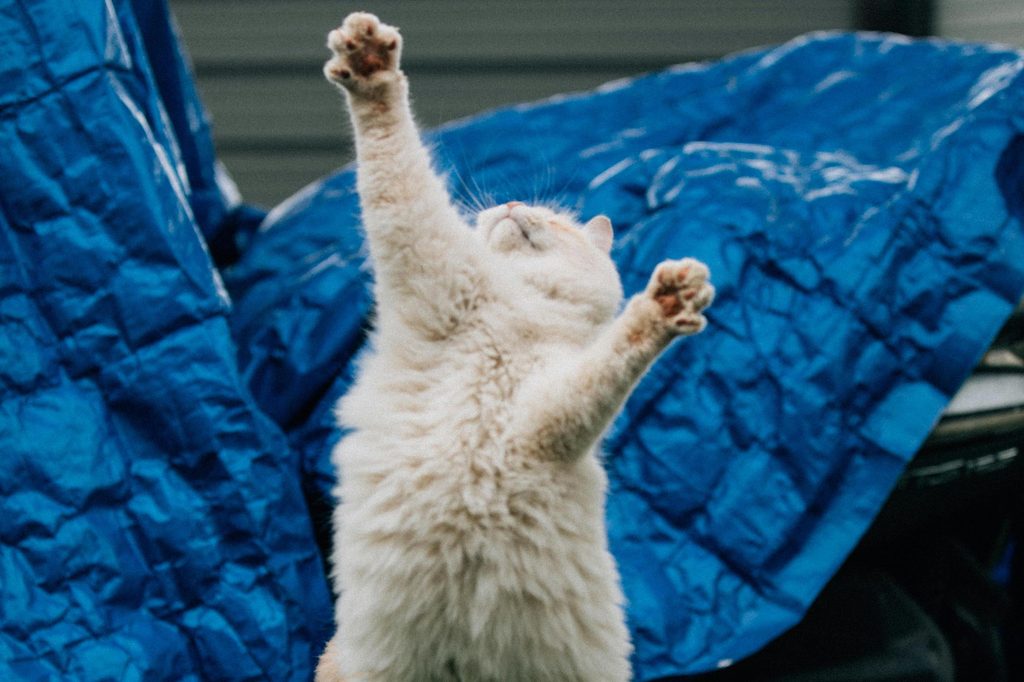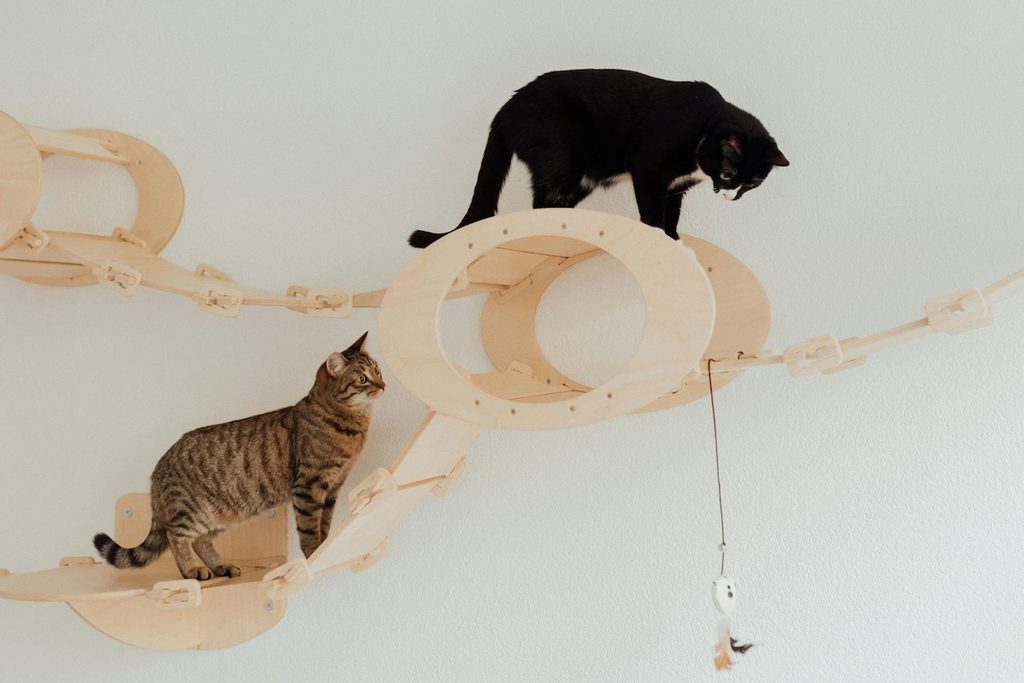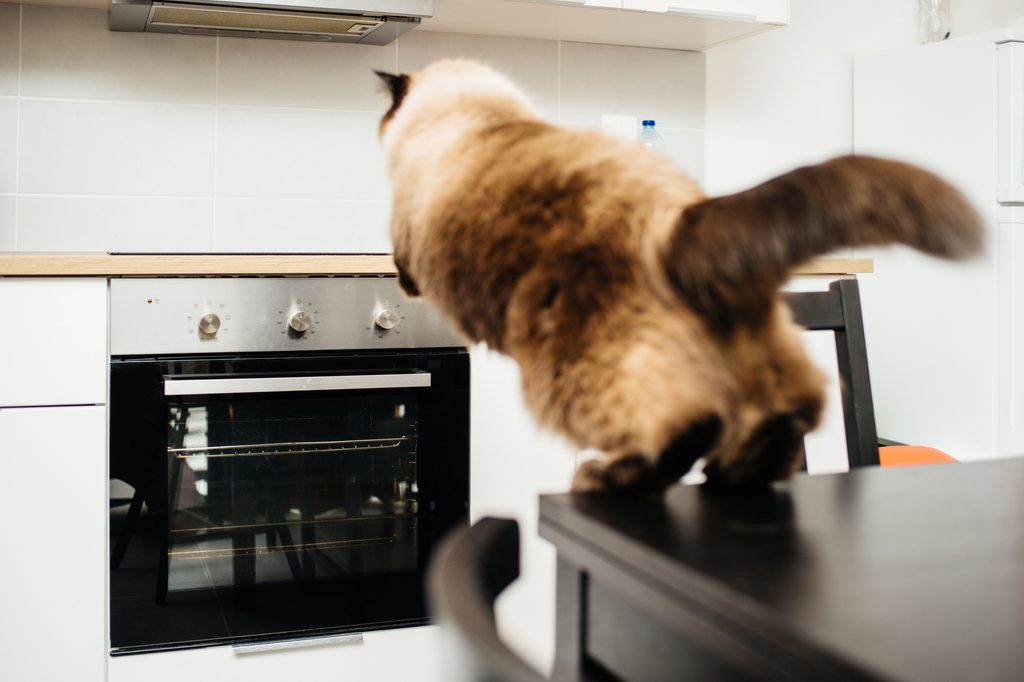You’ve probably heard it said that cats have nine lives, but sadly, this isn’t true. There are so many fascinating myths and folktales about our feline friends, and some have more truth to them than others. Cats’ ability to land on their feet, for example, is something akin to a superpower, but how does it work? Is it truly as reliable as we were led to believe?
If you’ve ever wondered, “Why do cats always land on their feet?”– keep on reading to find out. We’ll discover the unique anatomy and bodily systems that make cats so agile, and we’ll learn how to keep felines safe from unexpected falls.
Do cats always land on their feet?

As impressive as it is to think that cats always land on their feet, the reality is that they almost always land on their feet. They could still get hurt from a fall! A number of factors can affect a cat’s agility while falling, but they do have a rather impressive success rate. It’s easy to see why our pet cats have built themselves a reputation as agile (and attitude-ridden) acrobats!
For centuries, scientists believed that cats controlled the way they fell by pushing off a surface at a lightning-fast speed. However, in the late 19th century, French physiologist Etienne-Jules Marey used a special chronophotographic camera to prove otherwise. He filmed a cat’s fall at 60 frames per second, which he was able to view in slow motion or even frame by frame. This proved that cats do not push off a surface to control their fall, like a diver. So how do they do it?
Why do cats always land on their feet?

From a special reflex to anatomical differences, a few unique factors help cats land on their feet most of the time. But remember, not all cats and kittens will be equally as skilled in agility. More on that below.
What is the righting reflex?
All cats have the righting reflex, which allows them to turn the correct way around while falling. This way, they almost always land on their feet and avoid injury. The righting reflex begins developing in newborn kittens as young as 3 weeks old — the age when most kittens begin crawling — and it’s almost always fully developed by the time a kitten celebrates their 7-week birthday.
How does the righting reflex work? Like many other species, cats have a vestibular system in their inner ear that’s responsible for balance and coordination. The highly developed system quickly figures out which way is up, allowing a cat to rotate their head and then their body in the correct direction.
Cats’ unique body structure

Domestic felines and wild cats all have the righting reflex, but they also have unique anatomical structures that allow them to move quickly while free falling. First, cats have no collarbones. This gives them much more flexibility than other animals, as does their flexible spine with 30 vertebrae. For comparison, human adults have only 24 vertebrae in their spine.
Cats also use their legs to help turn in midair, which makes landing on their feet much more likely. While falling, a kitty will extend their back legs while tucking in their front paws to create inertia for a rotation, exactly like a figure skater doing a spin on the ice. This is a perfect example of how a cat’s brain and body work together to keep them safe and oriented correctly while falling.
Outside factors that affect a cat’s fall
Even though all felines have the righting reflex and the body structure to right themselves during a fall, not all cats have the strongest leg muscles or quickest reflexes. Those that climb on cat trees or furniture may actually be better equipped to survive a fall due to their developed muscles and seasoned reflexes.
As it turns out, the height of a cat’s fall may also affect the outcome of the fall. A 1987 veterinary study found that cats that fell from a height of 2 to 6 stories actually sustained more injuries than cats that fell from a height of 7 to 32 stories. That’s because a longer fall gives cats more time to correctly orient themselves to land on their feet. Because of cats’ lower body weight, they only reach a maximum free fall velocity of 60 mph (that’s about half of a human’s maximum velocity), at which they can stretch out their limbs to create air resistance. Their body acts as a kind of parachute.
Impressive, isn’t it? Cats have been hiding a superpower right beneath our noses all along, but it’s just as important for cat owners to keep their pets safe from harm – -including big falls. However, this may be a sign to invest in a new cat tree so your kitty can practice climbing and building those life-saving reflexes.




